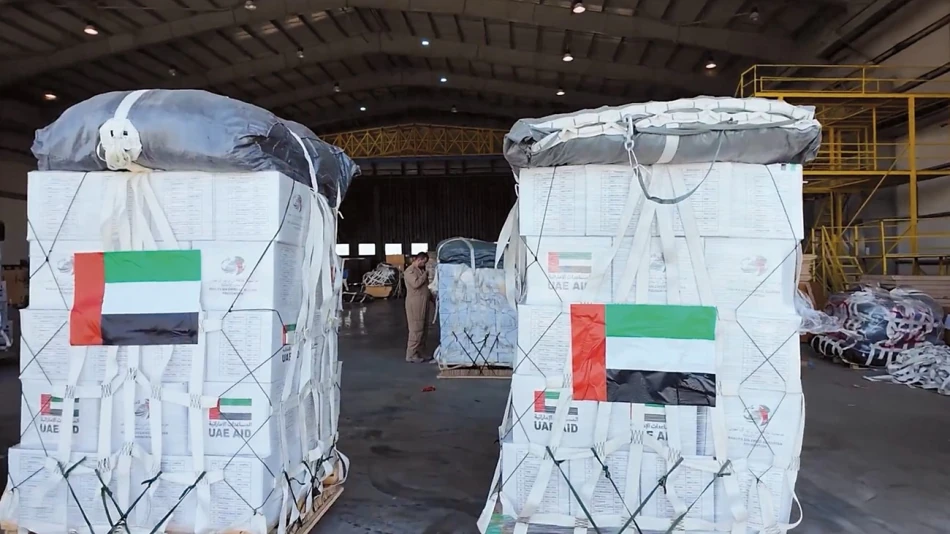
UAE Airlifts Vital Aid to Gaza for 5th Consecutive Day, Providing Crucial Relief to Residents
UAE Intensifies Gaza Aid Operations with Fifth Consecutive Day of Airdrops
The United Arab Emirates has executed its 58th airdrop mission over Gaza as part of a sustained humanitarian campaign that has now delivered over 3,787 tons of critical supplies to the besieged territory. This coordinated effort with Jordan represents one of the most significant aerial aid operations in the region, highlighting how Gulf states are filling humanitarian gaps when traditional ground-based relief faces security obstacles.
Operation "Birds of Goodness" Reaches New Milestone
The UAE's latest airdrop, conducted under the broader "Noble Knight 3" initiative, marks the fifth consecutive day of aerial deliveries to Gaza's most inaccessible areas. The operation has now deployed 197 aircraft since its inception, demonstrating a level of logistical commitment that rivals major international humanitarian organizations.
This sustained aerial campaign addresses a critical challenge in modern conflict zones: how to deliver aid when ground access becomes impossible due to security concerns. The UAE's approach mirrors successful humanitarian airdrops in Afghanistan and Syria, but operates at a scale that sets new precedents for Gulf state involvement in regional crises.
Multi-Channel Aid Strategy Shows Diplomatic Sophistication
Beyond the headline-grabbing airdrops, the UAE simultaneously coordinated the entry of 41 aid trucks through various ground crossings, including 12 vehicles carrying medical supplies destined for the World Health Organization. This dual-track approach—combining aerial and ground delivery—reflects sophisticated crisis management that maximizes aid distribution while navigating complex political sensitivities.
Strategic Implications for Regional Leadership
The UAE's humanitarian offensive positions the country as an indispensable mediator in Middle Eastern crises, a role it has cultivated through similar operations in Yemen, Syria, and Afghanistan. Unlike traditional aid donors who often work through multilateral organizations, the UAE's direct bilateral coordination with Jordan bypasses bureaucratic delays while building stronger regional partnerships.
This approach contrasts sharply with European and American aid strategies, which typically emphasize funding international organizations rather than conducting direct operations. The UAE's hands-on methodology allows for rapid deployment but also carries greater political and operational risks.
Economic and Diplomatic Dividends
For the UAE, these operations serve multiple strategic objectives beyond humanitarian relief. The country strengthens its relationship with Jordan, a key regional ally, while demonstrating to international partners its capacity for complex logistical operations. This operational capability becomes particularly valuable as global powers seek reliable partners for crisis response in an increasingly unstable region.
The scale of the operation—nearly 4,000 tons of aid—also showcases the UAE's economic capacity to sustain major humanitarian commitments without international funding, distinguishing it from aid-dependent countries and reinforcing its status as a regional power broker.
Setting Precedents for Future Crises
The UAE's Gaza operation establishes new benchmarks for rapid humanitarian response that other Gulf states and regional powers will likely study and potentially replicate. The integration of aerial and ground delivery systems, combined with real-time coordination across multiple countries, creates a template for addressing future humanitarian emergencies in conflict zones where traditional aid mechanisms prove inadequate.
Most Viewed News

 Sara Khaled
Sara Khaled






